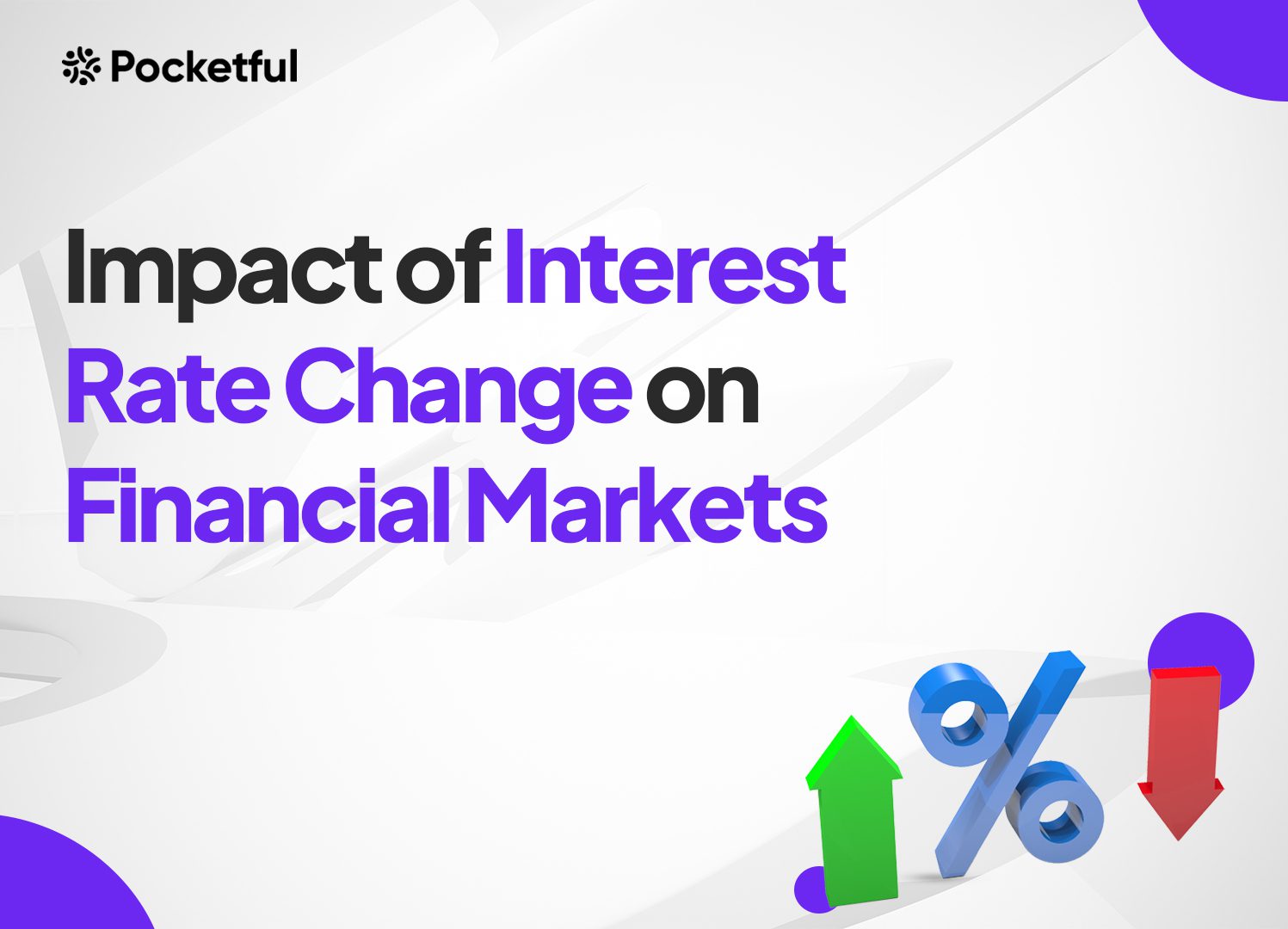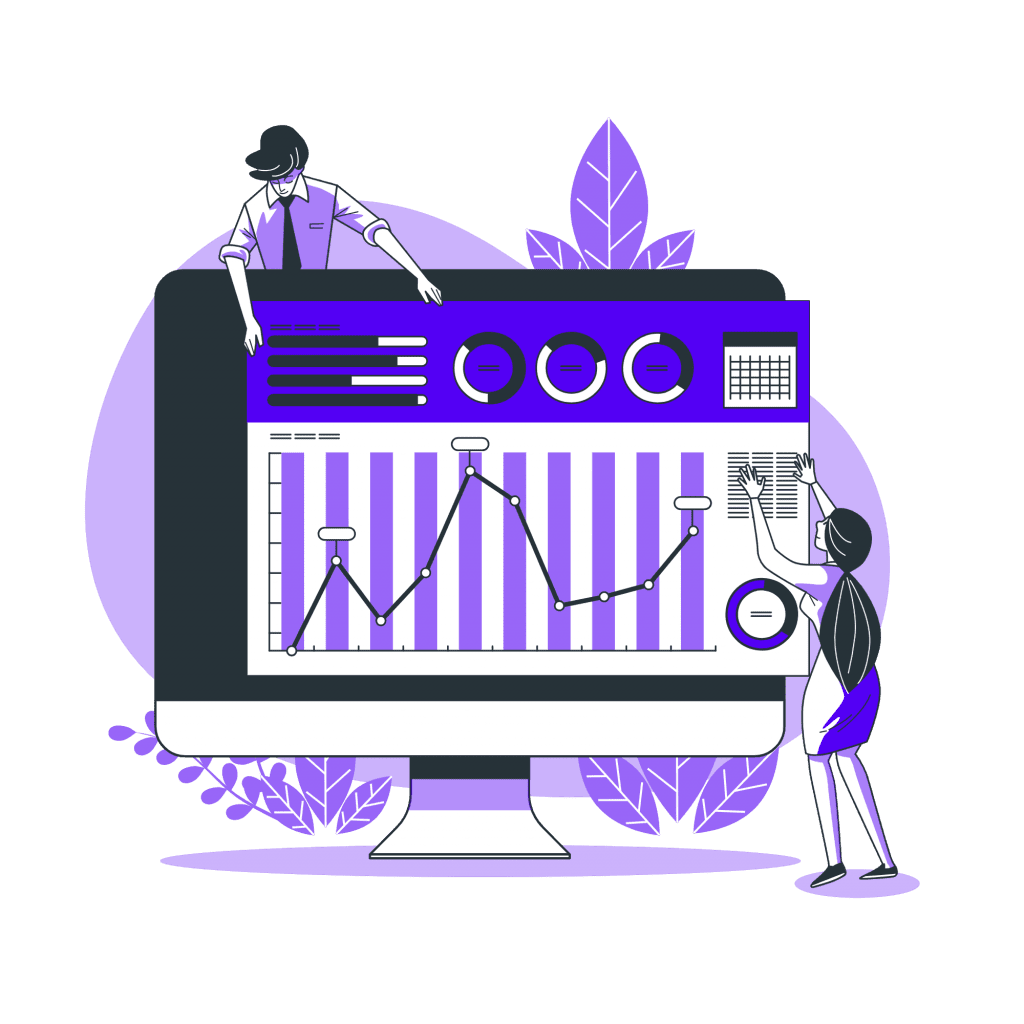| Type | Description | Contributor | Date |
|---|---|---|---|
| Post created | Pocketful Team | Aug-24-24 | |
| Add new links | Nisha | Feb-25-25 | |
| Add new links | Nisha | Feb-25-25 |

- Blog
- impact of interest rate change on financial markets
Impact of Interest Rate Change on Financial Markets

A small change in the interest rate can have a significant impact on stock markets, debt markets, etc. Let’s dive deeper to understand the connection between interest rate changes and their impact on the economy and on different asset classes.
In this blog, we will discuss the impact of recent interest rate changes introduced in Japan on financial markets.
Interest Rate Changes and Its Impact

Interest rate changes have a significant impact on the economy, stock market, currency market, and even debt markets. Here’s a breakdown of its impact on each of these areas :
Impact on the Economy
Interest rate changes impact the economy in the following ways:
- Consumer Saving: Higher interest rates make borrowing more expensive; hence, reducing consumer spending or saving becomes more attractive, as an increase in interest rates will increase the returns on savings accounts. Lower interest rates will have the opposite impact.
- Business Investment: Interest rate changes affect not only consumer spending but also business investments. Higher rates will increase the cost of borrowing, which reduces expansion activities and investments in new projects. On the other hand, a rate decrease will be positive for businesses as lower rates reduce the cost of capital, encouraging them to invest and expand.
- Inflation: Central banks increase interest rates to curb inflation while decreasing interest rates have the opposite effect.
- Economic Growth: Interest rate increases can slow down economic growth, as higher borrowing costs will lead to reduced consumption and investment. In contrast, interest rate decreases are generally positive and boost economic growth by encouraging spending and investment.
Impact on the Currency Market
Interest rate changes impact the currency market in the following ways:
- Currency appreciation or depreciation: Higher interest rates attract foreign investors, as returns will be higher. This will increase the demand for the currency, which in turn will lead to its appreciation. The currency depreciates if the interest rate is reduced.
- Capital Flows: Foreign capital through the FDI route will increase as investors seek higher returns, and the opposite will be true for interest rate decreases.
Impact on the Stock Market
Interest rate changes impact the stock market in the following ways:
- Valuation of Stocks: Higher interest rates can reduce the present value of future earnings of the companies, leading to lower stock prices. This is especially true for growth stocks, where expected future earnings make up a larger portion of their valuation. The opposite is true for interest rate decreases.
- Corporate Profits: An interest rate increase will increase the borrowing costs or cost of capital for the companies, which can reduce profitability and lead to lower stock prices.
- Sectoral Impact: An interest rate increase will impact certain sectors, such as utilities, automobiles, real estate, etc., which rely heavily on debt financing. These sectors may suffer, while financial institutions (like banks) may benefit from higher loan margins.
Impact on Debt Market
Interest rate changes significantly impact debt markets, influencing everything from bond prices to yields and overall market dynamics. Here’s how interest rates affect debt markets:
- Bond Prices and Yields: They have an inverse relationship, as when interest rates rise, bonds with lower interest rates become less attractive, causing their prices to fall. New bonds are issued at higher rates, making older bonds less valuable. The opposite is true when interest rates fall; existing bonds with higher interest rates become more attractive, causing their prices to rise as they offer better returns than newly issued bonds.
- Borrowing Costs: When interest rates rise, new debt issuance by corporations or governments will become more expensive as they must offer higher yields to attract investors.
- Credit Risk and Default Risk: Higher rates can widen credit spreads, and investors demand a higher premium to compensate for the increased risk of default in a higher interest rate environment. If the interest rate decreases, credit spreads may narrow.
Carry Trade: An Explanation
Carry trade is a strategy in which an investor borrows money in a low-interest-rate currency and invests in an asset denominated in a currency with a higher interest rate. The investor first borrows funds in a currency with a lower interest rate and invests the borrowed funds in an asset denominated in a currency with a higher interest rate to earn the interest rate differential, which is the difference between two interest rates minus any transaction cost. The goal of the carry trade is to capture the difference or spread.
Role of JPY in Carry Trade
Historically, Japan has had one of the lowest interest rates across the globe, which has made the Japanese Yen (JPY) a popular funding currency for traditional carry trades. However, recent changes in Japan’s monetary policy have affected the global carry trade dynamics.
A recent interest rate hike in Japan by the Bank of Japan (BoJ) had a huge impact on the Japanese markets, leading to significant volatility. Their central bank hiked the interest rates from 0% to 0.25%, which was unexpected. The policy change was required to stabilize the Yen in a high inflationary environment for currency stability and economic growth.
The Japanese currency will continue to strengthen if the BoJ (Bank of Japan) continues to tighten the monetary policy. Higher interest rates or the expectation of higher rates can attract foreign investment into Yen-denominated assets, increasing demand for the Yen. As the Yen appreciates, investors who previously engaged in traditional carry trades (borrowing in Yen to invest in higher-yielding currencies) might start unwinding these trades, reversing their positions by selling high-yielding currencies and buying back Yen.
Recent Development in Japan
The recent interest rate hike and weakening US economic outlook led to a sharp decline in Japanese equities and US equity markets. The Nikkei 225 experienced a big drop and plunged more than 20% between August 1st and August 5th, 2024. The decline was particularly evident in the technology and semiconductor sectors due to concerns over US restrictions on chip exports to China and broader market trends because of the reversal of carry trade, which is funded through Japanese Yen and invested in US technology stocks.
Despite this turmoil, domestic factors, such as rising wages and strong consumption, resulted in a subsequent recovery of Japanese equities. These are short-term fluctuations, and as per the broader outlook, the market will absorb the impact of the rate hike slowly. There will be a potential recovery driven by continued wage growth and strong domestic demand.
Impact on the Indian Economy
The reverse carry trade or the unwinding of traditional carry trades can increase volatility in currency markets worldwide. The flow of capital back into Yen as they have increased the interest rate could also pressure other currencies to weaken, particularly those that were previously beneficiaries of carry trade strategies. The Indian currency was not directly involved in carry trades, so the direct risk is minimal for Indian markets. However, this shift can have broader implications for global financial markets, as changes in exchange rates and interest rate expectations influence everything from equity markets to bond yields.
Read Also: Impact of Interest Rate Change on Financial Markets
Conclusion
To conclude, the interest rate is a mechanism through which central banks manage inflation, promote economic growth, and facilitate financial stability. They also have other tools, but the interest rate mechanism holds a special role. Some negative impacts can be seen in the short term, but in the long run, it promotes growth and enhances stability. The interest rate hike was aimed to slow down the economy and curb inflation. It also strengthens the currency but can negatively affect stock markets, especially debt-reliant sectors. Interest rates are decreased to stimulate the economy and boost stock market returns, particularly in growth-oriented and rate-sensitive sectors, but it weakens the currency.
Frequently Asked Questions (FAQs)
What risks are involved in a carry trade?
The main risks include interest rate risk (change in interest rates) and exchange rate risk (exchange rate moves unfavorably).
How does a reverse carry trade differ from a traditional carry trade?
A reverse carry trade involves borrowing in a high-interest-rate currency and investing in a low-interest-rate currency. This strategy is used when an investor expects the low-interest rate currency to appreciate against the high-interest rate currency.
Why is the Japanese Yen often used in carry trades?
The Japanese Yen has historically had very low interest rates because of their loose monetary policy, making it a popular currency to borrow for carry trades.
Do global events affect carry trades?
Carry trades are sensitive to global events, such as monetary policy changes, political instability, geopolitical tensions, economic crises, etc.
Disclaimer
The securities, funds, and strategies discussed in this blog are provided for informational purposes only. They do not represent endorsements or recommendations. Investors should conduct their own research and seek professional advice before making any investment decisions.